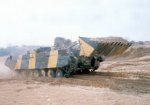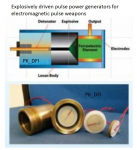Defence Research and Development Organisation (DRDO) : News and Updates
- Thread starter Ashwin
- Start date
DRDO’s surveillance system to bolster Army's defence system along the border
Dehradun: To bolster the Indian Army’s defence and surveillance systems along the border, the Dehradun-based Instruments Research and Development Establishment (IRDE), an arm of the Defence Research & Development Organisation (DRDO), has developed a state-of-the-art surveillance equipment —Video and Image Processing Enhancement and Recognition System (VIPERS).
According to scientists at IRDE, VIPERS is an automated round-the-clock multi-sensor surveillance system capable of providing high-resolution imaging in any environment. It will also enable the army to get “clinical precision while firing”.
“VIPERS is based on artificial intelligence and can recognise 20 different types of objects at a distance of up to 20 kilometre range. It is equipped with a convolutional neural network hardware chip which can capture photos at seven frames per second. Several chips can be teamed up to boost the performance of the automated surveillance in real time,” said JP Singh, a senior scientist at IRDE who is heading the project team.
“VIPERS can work with day and night cameras, including Thermal Imagers, Active Laser, IR LED etc., to ensure flawless surveillance,” added Singh.
The scientist further said that it took a few decades to shape up the system.
“The system has been developed after painstaking efforts of several years. My team is excited about the forthcoming field trials to be conducted by Indian Army next month which would test the entire range of features of the system and also help plan the next level of upgrade,” said Singh.
DRDO’s surveillance system to bolster Army's defence system along the border | Dehradun News - Times of India
Dehradun: To bolster the Indian Army’s defence and surveillance systems along the border, the Dehradun-based Instruments Research and Development Establishment (IRDE), an arm of the Defence Research & Development Organisation (DRDO), has developed a state-of-the-art surveillance equipment —Video and Image Processing Enhancement and Recognition System (VIPERS).
According to scientists at IRDE, VIPERS is an automated round-the-clock multi-sensor surveillance system capable of providing high-resolution imaging in any environment. It will also enable the army to get “clinical precision while firing”.
“VIPERS is based on artificial intelligence and can recognise 20 different types of objects at a distance of up to 20 kilometre range. It is equipped with a convolutional neural network hardware chip which can capture photos at seven frames per second. Several chips can be teamed up to boost the performance of the automated surveillance in real time,” said JP Singh, a senior scientist at IRDE who is heading the project team.
“VIPERS can work with day and night cameras, including Thermal Imagers, Active Laser, IR LED etc., to ensure flawless surveillance,” added Singh.
The scientist further said that it took a few decades to shape up the system.
“The system has been developed after painstaking efforts of several years. My team is excited about the forthcoming field trials to be conducted by Indian Army next month which would test the entire range of features of the system and also help plan the next level of upgrade,” said Singh.
DRDO’s surveillance system to bolster Army's defence system along the border | Dehradun News - Times of India
From the recent NAL 2018-19 Annual report :
NAL's effort in the field of Wankel engines for medium weight drones :

NAL's participation in a niche area of space sector :
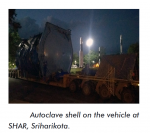
NAL's contribution to the LCA project :

Product developed for civil aviation industry :

Some drones for survey work :
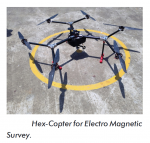

Some tools used in manufacturing aerospace components :
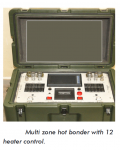

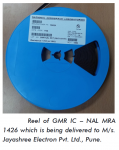
https://www.nal.res.in/medias/content_image/other/1009/dir-rep19.pdf
NAL's effort in the field of Wankel engines for medium weight drones :

NAL's participation in a niche area of space sector :

NAL's contribution to the LCA project :

Product developed for civil aviation industry :

Some drones for survey work :


Some tools used in manufacturing aerospace components :



https://www.nal.res.in/medias/content_image/other/1009/dir-rep19.pdf
From the recent DRDO Newsletter :
Guided Pinaka test fire :


Ah Corner Shot ! One of those mythical legenndary weapons that we never had. Then something happened and suddenly everybody has them. Now every second day somebody comes up with a new model of Corner shot.

New target drone :

Satheesh baba goli chala rahe hain.

Rdeuced sensitivity RDX for future missile ? Brahmos 2 ? Reduced sensitivity explosives are used in penetration warheads to prevent impact detonation.

source : https://www.drdo.gov.in/drdo/pub/newsletter/2019/june_19.pdf
Guided Pinaka test fire :


Ah Corner Shot ! One of those mythical legenndary weapons that we never had. Then something happened and suddenly everybody has them. Now every second day somebody comes up with a new model of Corner shot.


New target drone :
Satheesh baba goli chala rahe hain.

Rdeuced sensitivity RDX for future missile ? Brahmos 2 ? Reduced sensitivity explosives are used in penetration warheads to prevent impact detonation.

source : https://www.drdo.gov.in/drdo/pub/newsletter/2019/june_19.pdf
DRDO pins hopes on target drone Abhyas
Onmanorama Staff June 19, 2019 06:21 AM IST

Abhyas HEAT taking off from launcher(File photo)
The Defence Research and Development Organisation (DRDO) is aggressively pushing Abhyas – the High-speed Expendable Aerial Target (HEAT) – to enter into the production mode by next year.
Buoyed by successful text-book-launch of Abhyas last month from ITR Chandipur, the DRDO scientists are now readying the flight for another trial in the presence of Service representatives. Abhyas was virtually put to death by the previous regime at the helm of affairs in DRDO, citing initial setbacks the programme had. All that has changed with a new team in place and Abhyas has now being given a rebirth.
During the recent trial, it flew for 32 minutes and successfully cleared 21 way-point-navigation modes. The MEMS-based (Micro-Electro-Mechanical Systems) navigation developed by RCI Hyderabad came to its rescue this time.
Unlike DRDO’s extravagant size of project teams, Abhyas had only a small and young team. The idea took birth in 2013, when the Services wanted an expendable self-propelled aerial target.
With the mandate of developing a low-cost target, scientists wanted to convert the tow-body of a recoverable Lakshya-PTA into an expendable self-propelled aerial target.
The inspiration was that they had identified a mini gas turbine engine which fits inside the diameter of the tow-body.Having grown into a UAV laboratory, Aeronautical Development Establishment (ADE) had already developed many systems over the years. The industry too had matured enough by supporting various UAV platforms developed by ADE.
Abhyas was designed to be launched from a zero-length launcher by two 68 mm rockets. It could fly up to an altitude of 5 km and a speed of 180 m/s. The platform had a maximum endurance of 45 minutes. Abhyas boasts of being light weight (70kg), modular construction, easy to handle, auto-pilot, low cost, simple launcher and can be deployed in a decoy role as well.
DRDO scientists are excited about the recent trials but they have a long way to go before the Services accept it and give the go-ahead for the mass production.While ADE over the years has tested the patience of Services with many of its projects hitting road-blocks, delays and uncertainties, it is left to be seen what future holds for Abhyas.
Similar to Abhyas, the subsonic cruise missile Nirbhay project too was revived by the DRDO top brass. DRDO insiders say that Abhyas team is now gearing up for developmental flight trials with active user participation. The next task will be to transfer the technology to an Indian industry.
For now, they have set an internal target of December 2020 to begin production.Until then and may be beyond, the Services will continue to test the accuracy of their weapons and air defence training against Jet Banshee, an imported target drone from the hangars of Meggit Systems, UK.
And, DRDO will have to deliver a target drone that meets all requirements of the user.
DRDO pins hopes on target drone 'Abhyas'
Onmanorama Staff June 19, 2019 06:21 AM IST

Abhyas HEAT taking off from launcher(File photo)
The Defence Research and Development Organisation (DRDO) is aggressively pushing Abhyas – the High-speed Expendable Aerial Target (HEAT) – to enter into the production mode by next year.
Buoyed by successful text-book-launch of Abhyas last month from ITR Chandipur, the DRDO scientists are now readying the flight for another trial in the presence of Service representatives. Abhyas was virtually put to death by the previous regime at the helm of affairs in DRDO, citing initial setbacks the programme had. All that has changed with a new team in place and Abhyas has now being given a rebirth.
During the recent trial, it flew for 32 minutes and successfully cleared 21 way-point-navigation modes. The MEMS-based (Micro-Electro-Mechanical Systems) navigation developed by RCI Hyderabad came to its rescue this time.
Unlike DRDO’s extravagant size of project teams, Abhyas had only a small and young team. The idea took birth in 2013, when the Services wanted an expendable self-propelled aerial target.
With the mandate of developing a low-cost target, scientists wanted to convert the tow-body of a recoverable Lakshya-PTA into an expendable self-propelled aerial target.
The inspiration was that they had identified a mini gas turbine engine which fits inside the diameter of the tow-body.Having grown into a UAV laboratory, Aeronautical Development Establishment (ADE) had already developed many systems over the years. The industry too had matured enough by supporting various UAV platforms developed by ADE.
Abhyas was designed to be launched from a zero-length launcher by two 68 mm rockets. It could fly up to an altitude of 5 km and a speed of 180 m/s. The platform had a maximum endurance of 45 minutes. Abhyas boasts of being light weight (70kg), modular construction, easy to handle, auto-pilot, low cost, simple launcher and can be deployed in a decoy role as well.
DRDO scientists are excited about the recent trials but they have a long way to go before the Services accept it and give the go-ahead for the mass production.While ADE over the years has tested the patience of Services with many of its projects hitting road-blocks, delays and uncertainties, it is left to be seen what future holds for Abhyas.
Similar to Abhyas, the subsonic cruise missile Nirbhay project too was revived by the DRDO top brass. DRDO insiders say that Abhyas team is now gearing up for developmental flight trials with active user participation. The next task will be to transfer the technology to an Indian industry.
For now, they have set an internal target of December 2020 to begin production.Until then and may be beyond, the Services will continue to test the accuracy of their weapons and air defence training against Jet Banshee, an imported target drone from the hangars of Meggit Systems, UK.
And, DRDO will have to deliver a target drone that meets all requirements of the user.
DRDO pins hopes on target drone 'Abhyas'
Good news India's first land based DEW system is ready .
It is HPM ( high power microwave ) based.
It is HPM ( high power microwave ) based.
Good news India's first land based DEW system is ready .
It is HPM ( high power microwave ) based.
When will it be tested ?
Will it be like the railgun we tested recently i.e. small scale prototype or a larger more usable model ?
When will it be tested ?
Will it be like the railgun we tested recently i.e. small scale prototype or a larger more usable model ?
Full operational configuration , based on a 8x8 man trailer
About tests no idea
Last edited:
Full operational configuration , based on a 8x8 man trailer
About tests no idea
MTRDC was working on it. Not read anywhere, that its got into operational config. LASTEC was working on 2kw laser as dew with 1 km range. Kalyani group was also working on dew, but they specifically had said, anti missile function.
Interesting that you are saying the HPM has been mounted on a platform. Any place to read?
MTRDC was working on it. Not read anywhere, that its got into operational config. LASTEC was working on 2kw laser as dew with 1 km range. Kalyani group was also working on dew, but they specifically had said, anti missile function.
Interesting that you are saying the HPM has been mounted on a platform. Any place to read?
Somebody posted it's pic in d.fi
When will it be tested ?
Will it be like the railgun we tested recently i.e. small scale prototype or a larger more usable model ?
It's definitely usable since it's part of the Phase 1 for DEWs, both HPM and lasers, up to 7Km. It can't protect tanks and stuff, but it can protect static targets from drones.
Something like this:
Oh my God, the Marines have a laser now
Phase 2 will see the development of far more powerful HPMs and lasers, 15-20Km.
Copy pasta :
DRDO first land based mobile DEW system(HPM-HIGH POWER MICROWAVE). It can generate 500 MW of RF power in S-band. It is mast mounted and the complete system is mounted on a 8x8 trailer.
DRDO is working on new systems with increased power and range(strategic level)



Is this the thing guys ? @hellfire @Killbot
500 MW is no joke. Point this at a aircraft(a slow moving, low flying kind) and you will fry the computers and bring it down. Point this at any thing carrying any combustible substance inside a metallic container/enclosure(like say missiles, bombs, rockets, fuel tank of planes, artillery shells, MBT guns etc.), it would explode and do some severe internal damage. In most cases the target will be left in pieces and beyond repair.
The mast on which the HPM is mounted appears to be similar to the telescopic masts already in service. The Army uses it to mount BFSR-MR, LORROS, Himshakti EW system.





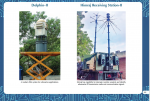
As is shown above, the mast can be extended to take the HPM to a height enabling a greater engagement bubble. The truck is probably a BEML, AL or TATA, there seems to be a oil fired generator mounted ahead of the HPM mount. The boxy structure behind it might be the command and control station. It also looks like there are some day-light/thermal cameras present along with laser range finders, these things are necessary for proper aiming.
As is standard with all new weapons, it will probably take some time for it to mature. It will also take some time for the users to come up with proper usage, maintenance, repairs, overhaul etc. procedures.
What is the effective range of this thing though ? As for the strategic HPM being developed, what is the end goal ? Shooting down ballistic missiles in ascent stage ? That ought to be fun.
DRDO’s Laser Science and Technology Centre(LASTEC) was building a 300 kW laser system, what happened to that ? still on track ?
Once these systems are tried, tested and proven on a ground based platform, it won't be very difficult for it to migrate to naval platforms. Although aerial platforms might prove to be a significant challenge, it is totally worth the effort if we can get it to work.
I remember the rumoured P-18 destroyer was supposed to carry DEW including lasers and HPMs. Let's see where it goes.
DRDO first land based mobile DEW system(HPM-HIGH POWER MICROWAVE). It can generate 500 MW of RF power in S-band. It is mast mounted and the complete system is mounted on a 8x8 trailer.
DRDO is working on new systems with increased power and range(strategic level)



Is this the thing guys ? @hellfire @Killbot
500 MW is no joke. Point this at a aircraft(a slow moving, low flying kind) and you will fry the computers and bring it down. Point this at any thing carrying any combustible substance inside a metallic container/enclosure(like say missiles, bombs, rockets, fuel tank of planes, artillery shells, MBT guns etc.), it would explode and do some severe internal damage. In most cases the target will be left in pieces and beyond repair.
The mast on which the HPM is mounted appears to be similar to the telescopic masts already in service. The Army uses it to mount BFSR-MR, LORROS, Himshakti EW system.






As is shown above, the mast can be extended to take the HPM to a height enabling a greater engagement bubble. The truck is probably a BEML, AL or TATA, there seems to be a oil fired generator mounted ahead of the HPM mount. The boxy structure behind it might be the command and control station. It also looks like there are some day-light/thermal cameras present along with laser range finders, these things are necessary for proper aiming.
As is standard with all new weapons, it will probably take some time for it to mature. It will also take some time for the users to come up with proper usage, maintenance, repairs, overhaul etc. procedures.
What is the effective range of this thing though ? As for the strategic HPM being developed, what is the end goal ? Shooting down ballistic missiles in ascent stage ? That ought to be fun.

DRDO’s Laser Science and Technology Centre(LASTEC) was building a 300 kW laser system, what happened to that ? still on track ?
Once these systems are tried, tested and proven on a ground based platform, it won't be very difficult for it to migrate to naval platforms. Although aerial platforms might prove to be a significant challenge, it is totally worth the effort if we can get it to work.
I remember the rumoured P-18 destroyer was supposed to carry DEW including lasers and HPMs. Let's see where it goes.

Copy pasta :
DRDO first land based mobile DEW system(HPM-HIGH POWER MICROWAVE). It can generate 500 MW of RF power in S-band. It is mast mounted and the complete system is mounted on a 8x8 trailer.
DRDO is working on new systems with increased power and range(strategic level)
View attachment 7855
View attachment 7856View attachment 7857
Is this the thing guys ? @hellfire @Killbot
500 MW is no joke. Point this at a aircraft(a slow moving, low flying kind) and you will fry the computers and bring it down. Point this at any thing carrying any combustible substance inside a metallic container/enclosure(like say missiles, bombs, rockets, fuel tank of planes, artillery shells, MBT guns etc.), it would explode and do some severe internal damage. In most cases the target will be left in pieces and beyond repair.
The mast on which the HPM is mounted appears to be similar to the telescopic masts already in service. The Army uses it to mount BFSR-MR, LORROS, Himshakti EW system.
View attachment 7858
View attachment 7862
View attachment 7863
View attachment 7861
View attachment 7859
View attachment 7860
As is shown above, the mast can be extended to take the HPM to a height enabling a greater engagement bubble. The truck is probably a BEML, AL or TATA, there seems to be a oil fired generator mounted ahead of the HPM mount. The boxy structure behind it might be the command and control station. It also looks like there are some day-light/thermal cameras present along with laser range finders, these things are necessary for proper aiming.
As is standard with all new weapons, it will probably take some time for it to mature. It will also take some time for the users to come up with proper usage, maintenance, repairs, overhaul etc. procedures.
What is the effective range of this thing though ? As for the strategic HPM being developed, what is the end goal ? Shooting down ballistic missiles in ascent stage ? That ought to be fun.
DRDO’s Laser Science and Technology Centre(LASTEC) was building a 300 kW laser system, what happened to that ? still on track ?
Once these systems are tried, tested and proven on a ground based platform, it won't be very difficult for it to migrate to naval platforms. Although aerial platforms might prove to be a significant challenge, it is totally worth the effort if we can get it to work.
I remember the rumoured P-18 destroyer was supposed to carry DEW including lasers and HPMs. Let's see where it goes.
Sir no offence but your understanding of how hpm deal damage is kind of flawed
500mw is a necessity otherwise difficult to propagate at meaningful ranges
Plus the efficiency of these system is very low barely 30% , lot of ground breaking work needed to get it to reach even 50% . I doubt if anybody has achieved it outside lab conditions of Darpa etc
And that is a telescopic mast , nothing extraordinary about it.
What is extraordinary about the hpm system is the configuration and selection of antennas.
Horn antennas sectoral e plane X 2
rectangular dielectric wave guides X 2 ( my guess since it looks closed on all sides , no open face )
Smaller versions of the both up x4 and down x4
Last edited:
None taken. I wasn't commenting on how HPMs work(I don't know really) but what effect it has. My understanding of effects of microwave, however flawed it maybe, was from open source articles about the side effects of microwave exposure on metallic object and electronics.Sir no offence but your understanding of how hpm work is kind of flawed
Effects on electronics exposed to high-power microwaves on the basis of a relativistic backward-wave oscillator operating on the X-band : (Not S-band, I know. But close enough)
https://www.tandfonline.com/doi/abs/10.1080/09205071.2017.1354728
From the paper :
"The effects on electronic devices exposed to HPMs, the failure of information equipment, and modulation of and interference with the received signal through a theoretical model of the threshold power relative to the influence on the target were confirmed in a high-output microwave exposure environment. Particularly, information devices containing semiconductors can undergo serious failures and breakdowns due to the thermal secondary breakdown caused by the high-output transient electromagnetic waves, and it is a theoretical consideration that reverse voltage occurs due to the generation of surge current when caught in the PN-junction region."
What happens if you put metals in Microwave : (as in the cooking device, not weapons)
What’s Up With That: Metal in the Microwave Explodes—Or Does It?
From the paper :
"Well, at a microscopic level most metals are lattice arrangements of atoms with a bunch of electrons freely floating around between them. The microwave radiation will attract all these electrons as it bounces around inside your microwave oven, pulling them back and forth, and this generates heat inside the metal. A large sheet of very thin metal, like a big piece of aluminum foil, can in fact heat up extremely rapidly, becoming so hot that it could start to burn the microwave. So don’t do that.
But the real danger comes from having metal with kinks or dead ends in it. That’s because as the electrons get shuffled back and forth, they will meet up with other electrons. This can create concentrated spots of negative charge. Electrons will naturally be repelled from areas where there is too much charge. If these negative spots happen to find themselves in a place where they are near air, like in the tines of a fork or a kink in crumpled aluminum foil, the electrons will jump away, creating a spark and ionizing the air molecules into a plasma. Particularly awesome high-school physics teachers will demonstrate this effect to a classroom by placing a CD in the microwave and watching the sparks fly. The sparks themselves probably won't start a fire but if they hit something flammable, like wax paper that you also put inside the microwave, it can lead to a situation where you’re running for the extinguisher."
Now I fully understand if the effects of a S-band HPM is different then the ones mentioned here. But since I don't know anything of the specs of the weapon, all I could do was speculate using open source information.
But if you could enlighten me about the effects and possible uses of the HPM here. I'd be delighted.
I never said it was extra ordinary. I only said it was already in use.And that is a telescopic mast , nothing extraordinary about it.
None taken. I wasn't commenting on how HPMs work(I don't know really) but what effect it has. My understanding of effects of microwave, however flawed it maybe, was from open source articles about the side effects of microwave exposure on metallic object and electronics.
Effects on electronics exposed to high-power microwaves on the basis of a relativistic backward-wave oscillator operating on the X-band : (Not S-band, I know. But close enough)
https://www.tandfonline.com/doi/abs/10.1080/09205071.2017.1354728
From the paper :
"The effects on electronic devices exposed to HPMs, the failure of information equipment, and modulation of and interference with the received signal through a theoretical model of the threshold power relative to the influence on the target were confirmed in a high-output microwave exposure environment. Particularly, information devices containing semiconductors can undergo serious failures and breakdowns due to the thermal secondary breakdown caused by the high-output transient electromagnetic waves, and it is a theoretical consideration that reverse voltage occurs due to the generation of surge current when caught in the PN-junction region."
What happens if you put metals in Microwave : (as in the cooking device, not weapons)
What’s Up With That: Metal in the Microwave Explodes—Or Does It?
From the paper :
"Well, at a microscopic level most metals are lattice arrangements of atoms with a bunch of electrons freely floating around between them. The microwave radiation will attract all these electrons as it bounces around inside your microwave oven, pulling them back and forth, and this generates heat inside the metal. A large sheet of very thin metal, like a big piece of aluminum foil, can in fact heat up extremely rapidly, becoming so hot that it could start to burn the microwave. So don’t do that.
But the real danger comes from having metal with kinks or dead ends in it. That’s because as the electrons get shuffled back and forth, they will meet up with other electrons. This can create concentrated spots of negative charge. Electrons will naturally be repelled from areas where there is too much charge. If these negative spots happen to find themselves in a place where they are near air, like in the tines of a fork or a kink in crumpled aluminum foil, the electrons will jump away, creating a spark and ionizing the air molecules into a plasma. Particularly awesome high-school physics teachers will demonstrate this effect to a classroom by placing a CD in the microwave and watching the sparks fly. The sparks themselves probably won't start a fire but if they hit something flammable, like wax paper that you also put inside the microwave, it can lead to a situation where you’re running for the extinguisher."
Now I fully understand if the effects of a S-band HPM is different then the ones mentioned here. But since I don't know anything of the specs of the weapon, all I could do was speculate using open source information.
But if you could enlighten me about the effects and possible uses of the HPM here. I'd be delighted.
I never said it was extra ordinary. I only said it was already in use.
If you want more info feel free to ask porky_kicker in his usual place,
I will be more than happy to answer your queries Gautam sarkar.
Bye
Last edited:


